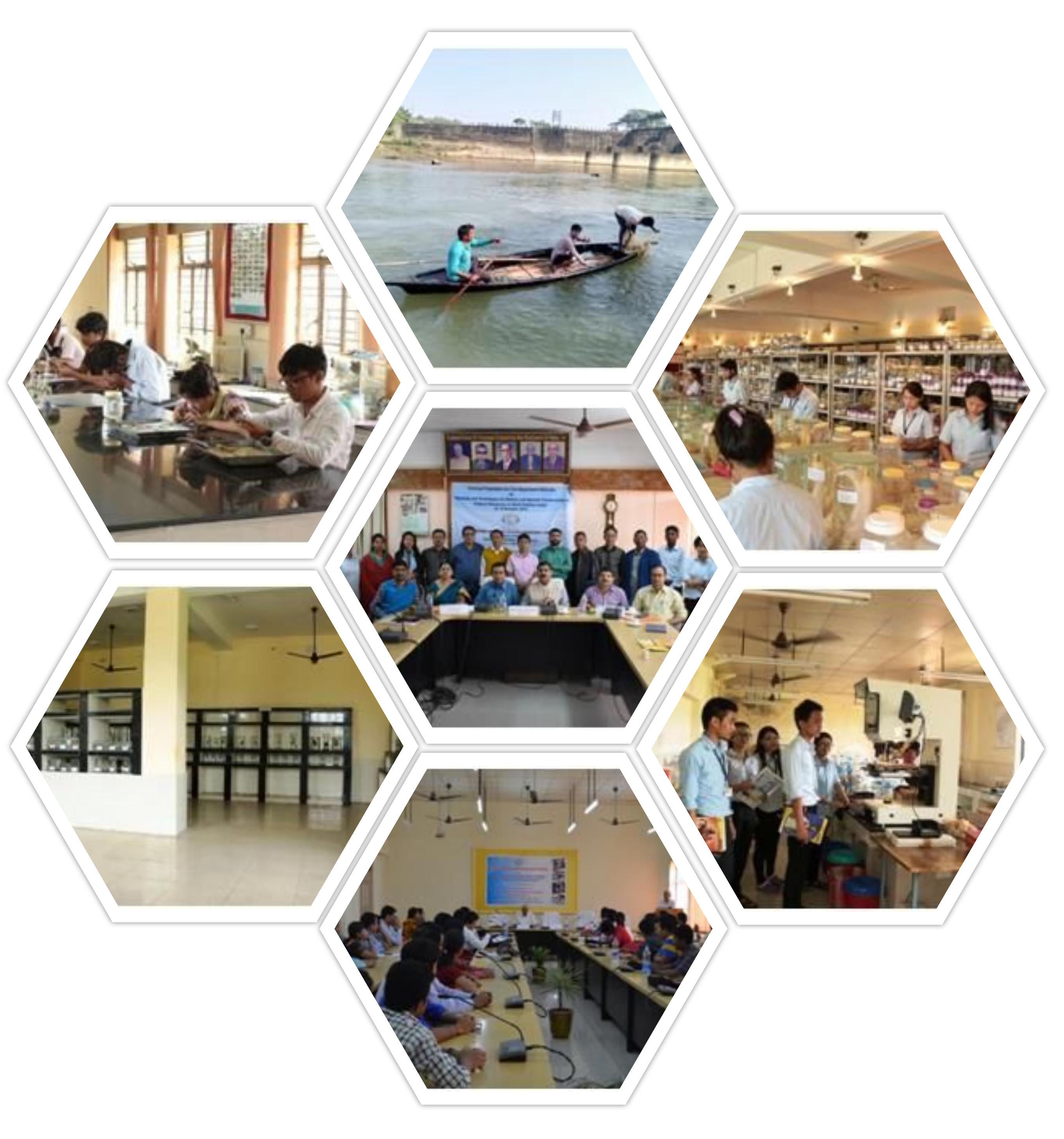
Departments
Department of Fisheries Resource Management (FRM)
 Brief overview of the Department:
Brief overview of the Department:
The fisheries sector in the NE region of India holds an important position in the socio-economic and the cultural context of the people in the region. However, despite the enormous importance and value, the fish resources of North-Eastern states of India are suffering the combined effects of heavy exploitation and, in some cases, environmental degradation. The responsibility for declining fish stocks followed by falling economic returns is also attributed to knowledge gap on methods and techniques on sustainable fisheries and conservation. It is at this context, the Dept. of Fisheries Resource Management established in the College of Fisheries under the Central Agricultural University assumes high significance. In tune with the mandates of the University, The Dept. conducts regular academic lessons to the B.F.Sc and M.F.Sc. students of the College on various topics spanning from Fish taxonomy, biology to dynamics of fish populations and resource assessment as part of their curriculum, and scientific research on diverse topics including species and population diversity, feeding, reproductive and environmental biology, stock assessment and level of exploitation of the fish resources in different water bodies of North east India. Moreover, regular extension trainings are also being conducted within and outside the institution to the fish farmers, line department officials, stake holders and various entrepreneurs of the region with the objectives of fish biodiversity assessment, sustainable fisheries management, conservation of the resources and rural empowerment.
The Dept. has been playing a pivotal role in fish biodiversity documentation of the NE region and recently, as part of the ongoing Centre of Excellence in Fisheries and Aquaculture Biotechnology (COE-FAB) a database on fish genetic resources of NE region with taxonomic diversity, distribution, abundance, threats, management and conservation needs of fishes has been developed applying conventional advanced techniques and methods. The department also holds a referral fish museum with 326 finfish and shellfish species which regularly cater the needs of students, researchers and scientists even from various allied institutes. Another remarkable achievement would be a separate barcode museum, where tentatively 310 fish species collected from various aquatic systems of NE India and 273 fishes were systematically identified with conventional and molecular methods were bar-coded and displayed. The Department also pioneered in stock assessment techniques and life history studies of fishes in this region, and database on these grounds were developed for a dozen of commercially important food and ornamental fish resources of NE India. Fourteen research projects have been successfully completed under the supervision of the faculties of the department and another three projects are in ongoing status. The department also works in close co-operation with Line departments of NE states specially with Directorate of Fisheries by conducting capacity building training to the fisheries officers on aspects of fishery resource management. The faculties of the department also represent in State Biodiversity Board, Tripura, Wetland development Board, Tripura, Department of Science and Technology as well as Department of Biotechnology, Tripura, District Administration on conservation of endangered turtle and temple water bodies and place required suggestions. Moreover, as part of the COE-FAB Project, the department works hands on hands with scientists and fisheries department offices in various North East states as well in diverse fields including fish biodiversity documentation, fisheries management and awareness programme to the rural communities. The department is also actively takes part in MGMG programme in adopted villages for better fisheries management. Seventeen students has successfully completed and acquired their M.F.Sc. degree from the department and presently another 9 students are pursuing their studies. The research thrust area of the department is more on the need of the region in fish & fisheries resource assessment, conservation and judicious utilization for which more concentration is on taxonomical studies, Food and feeding biology and Improvement of fish stock and reproductive performance through biotechnological tools as well as capacity building of technical manpower/fishers.
Key Achivements of the Department:
- Under project: Centre of Excellence on Fisheries and Aquaculture Biotechnology (COE-FAB), tentatively a total of 310 fish species( approximately 26,450 fish samples) were collected from various rivers and other freshwater bodies of various North-Eastern states, of which 273 fishes were taxonomically permanently identified, cataloged by classical morphological and meristic methods as well as molecular technique and also bar-coded.
- Establishment of referral fish museum with 326 finfish and shellfish species of both inland and marine origin and specially intended for NE fishes
- Establishment of barcode museum, where 273 fishes were systematically identified with conventional and molecular methods were bar-coded and displayed
- Morphological and molecular divergence study of fishes of NE India from difference natural systems
- Systematic study and taxonomic validation of fish species of river systems of NE India
- Stock discrimination and stock structure analysis of important fish species from different river systems of North East India.
- Study fish biology specially on food and feeding habit of important commercial food and ornamental fishes of NE region
- Providing capacity building training to Line dept. officials/ fishers/ rural communities on fish biodiversity documentation, fisheries management and awareness programme as well as consultancy services to other official shareholders/NGOs on fisheries resource management and conservation